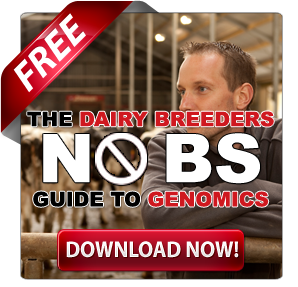Discover how war veterans are transforming dairy farming. Can their battlefield skills bring innovation and resilience to barnyards? Explore their unique journey.
Transitioning from military to civilian life is challenging for many veterans, as it demands emotional adjustment and new skills in a different environment. Dairy farming is a promising and formidable option among the career paths available. Nearly 10% of new dairy farmers in the United States are war veterans. Veterans bring resilience and reinvention to dairy farming, applying military discipline to a new, demanding field. We’ll look at these veterans’ challenges and triumphs and share expert insights on this growing trend. From the therapeutic benefits to economic opportunities, their stories offer a compelling narrative of adaptation and success. Join us as we explore how these unique ‘vets’ thrive in a field that demands hard work, commitment, and resilience.
Veterans in Dairy Farming: Stories of Perseverance, Dedication, and Transformation
One compelling success narrative is that of Adam Jackanicz, a veterinarian and milk quality supervisor at Alliance Dairies in Trenton, Florida, who also serves as the Public Health Officer for the 932nd Medical Squadron in the U.S. Air Force Reserve.
Initially told he could not pursue aviation due to poor eyesight, Jackanicz enlisted in the Air Force during veterinary school, a decision he wishes he had made sooner. “My regret is not signing up sooner,” he confides.
Overseeing the health and well-being of 10,000 cows, Adam finds that the Air Force values of integrity and excellence are indispensable in dairy farming. His military heritage is profound, with a family history rich in service and his wife offering pivotal support during the COVID-19 pandemic. Adam reenlisted immediately after 9/11, transitioning from an enlisted role to an officer’s commission, serving across various states until 2009, and rejoining the ranks in 2020.
Kyle Hayes, another distinguished war veteran, is a first-generation dairy farmer in northeast Texas who served in the Navy from 1971 to 1975. For Kyle, boot camp was a transformative experience, reminiscent of a scene from Forrest Gump.
Beginning his agricultural journey with beef cattle, Kyle transitioned to dairy farming over thirty years ago. He takes immense pride in his son, Kyle Jr., who plays a crucial role on the farm. To Kyle, military service and dairy farming are synonymous with hard work and sacrifice, instilling a profound sense of purpose.
Finally, Nathan Roth, a second-generation dairy farmer in Mountain Grove, Missouri, tends to 250 cows and farms 1,600 acres alongside his children. After high school, he joined the Navy and served a year in Vietnam.
Nathan’s return home was an emotional transition. Still, he remains grateful for the G.I. Bill, which enabled him to obtain an accounting degree. Dairy farming is Nathan’s true vocation, perfectly blending with the discipline instilled by his military training. He takes pride in his dual identity as a Vietnam veteran and a dedicated dairy farmer.
These stories exemplify veterans’ significant impact on agriculture, shedding light on their remarkable achievements and the obstacles they have overcome. Their contributions to the dairy farming industry invigorate local economies and cultivate a sense of purpose and community, demonstrating that the skills honed on the battlefield can yield bountiful harvests in America’s heartlands.
From Combat Boots to Barn Boots: Navigating the Transition from Military to Dairy Farming
The transition from military to civilian life often challenges veterans with identity shifts, psychological stress, and the loss of a structured community. Issues like PTSD and depression can make it hard to settle into new careers.
Yet, the skills from military service—operating under pressure, discipline, and resilience—are assets in dairy farming. Veterans excel in managing livestock, maintaining health standards, and handling agricultural unpredictability. Their strong work ethic and leadership can effectively manage farm teams and coordinate large-scale operations.
Moreover, their logistical and strategic planning expertise is crucial for crop rotations, feed schedules, and overall farm management—the teamwork and camaraderie from their service foster strong, cooperative farm communities.
Veterans’ resilience, discipline, and leadership ultimately lead to success and enhance the agricultural communities they integrate into.
Harnessing Military Expertise: How Veterans Excel in Dairy Farming
Veterans bring unique skills from their military service that translate seamlessly into dairy farming. Foremost is leadership. In the military, individuals must make quick decisions and lead teams through challenges. On a dairy farm, this leadership is evident in managing farmworkers, coordinating operations, and ensuring tasks are completed efficiently. This includes overseeing milking, maintaining livestock health, and adhering to regulations.
Discipline is another critical asset. The military demands a high level of personal discipline directly applicable to the rigorous routines of dairy farming. Veterans’ ability to stick to structured timelines ensures smooth operations, extending to essential record-keeping and maintenance.
Problem-solving is invaluable. Military training instills the capacity to think critically and act swiftly in the face of challenges. This ability translates well to dairy farming, from handling animal health crises to machinery breakdowns. Veterans can innovate solutions, improving aspects like biosecurity and milk yield.
Lastly, teamwork is crucial in both fields. Military operations rely on teamwork, as does dairy farming, which involves collaboration among various personnel. Veterans’ experience fosters a culture of teamwork and cooperation, enhancing productivity and creating a positive work environment.
Leadership, discipline, problem-solving, and teamwork are essential for managing a dairy farm successfully. Veterans find a rewarding second calling in farming and significantly contribute to the agricultural sector.
Navigating the Green Transition: Support Systems Paving the Way for Veterans in Agriculture
Transitioning from combat zones to pastoral fields is no small feat. Fortunately, numerous programs and organizations stand ready to support veterans in this journey. The Farmer Veteran Coalition (FVC) is a pivotal non-profit mobilizing veterans to feed America, offering training, mentorship, and financial assistance through the Fellowship Fund.
The United States Department of Agriculture (USDA) supports these efforts with its Veterans in Agriculture and Farming Program, established under the 2014 Farm Bill. This program provides veterans with accessible microloans and conservation programs to promote sustainable farming practices.
Community-centric programs like the Veteran Farmer at Turner Farm offer hands-on organic farming experience. Veterans like Rob Lewis have utilized this support to prepare for their farming ventures. Similarly, the Armed to Farm program combines sustainable agriculture training with technical assistance tailored for veterans.
Local initiatives also play a crucial role. Hines’ apprenticeship at Avril-Bleh & Sons Meat Market highlights the value of community-level engagements in offering real-world experience. State-specific programs in Michigan and Kentucky further reflect the importance of agriculture in veterans’ reintegration into civilian life.
Converging federal support, non-profit initiatives, and local programs creates a robust system that helps veterans thrive in agricultural settings. These resources provide essential skills, foster a sense of purpose, and build community for veterans in their post-military careers.
The Far-Reaching Impacts of Veterans in Dairy Farming: Economic and Social Dimensions
Integrating veterans into the dairy farming industry offers profound economic and social benefits that resonate throughout local communities. Economically, veterans foster job creation and sustain local economies with a dependable influx of skilled labor. Their military training in logistics, management, and operational efficiency translates seamlessly to agricultural endeavors.
Veteran farmers significantly enhance food security. Their disciplined practices ensure reliable production rates, providing a steady supply of high-quality dairy products. This consistency benefits consumers and strengthens the agricultural supply chain, reducing risks associated with market fluctuations and environmental challenges.
Socially, veterans in dairy farming invigorate community development. Their involvement stimulates rural economies, attracts regional investment, and fosters community solidarity. Initiatives like the Farmers Veteran Coalition and veteran agriculture programs offer essential support, enabling veterans to excel and become community pillars.
Inspiring narratives, such as Billy Webb’s transformation from a 20-year Navy veteran to a successful mushroom farmer, motivate other veterans and community members. These success stories highlight the potential for growth and adaptation within the veteran community, enriching rural areas’ social fabric and economic vitality.
Integrating veterans into dairy farming aligns with sustainable agriculture, community resilience, and economic development goals. Their contributions bolster rural economies, enhance food security, and tighten social bonds, underscoring their invaluable role in local and national landscapes.
Overcoming Barriers: Navigating the Complex Path of Military to Dairy Farming Transition
Transitioning from military service to dairy farming presents unique challenges. One significant barrier is access to land, often requiring substantial financial outlay that can be prohibitive for beginners. Veterans face disadvantages in securing farmland due to high costs and competitive markets.
Innovative solutions like the Farmer Veteran Coalition and veteran-specific grant funding address this issue. The 2014 Farm Bill, for example, introduced provisions supporting veteran farmers through targeted grants and land acquisition assistance.
Another challenge is access to capital for necessary equipment and infrastructure. Traditional financing demands substantial collateral and high interest rates, making it less accessible. Veteran-focused loan programs and micro-financing options offer favorable terms and lower entry barriers, helping bridge financial gaps.
Technical knowledge is another hurdle. Military training instills discipline and resilience but not specialized dairy farming knowledge. Educational programs tailored to veterans are essential. Programs like the veteran farmer initiatives at Turner Farm provide hands-on training and mentorship.
Social and emotional support is vital, too. Farming can be isolating, lacking the camaraderie found in military service. Peer mentorship programs and community farming initiatives foster and encourage belonging and build technical competence and emotional resilience.
The Future of Veterans in Dairy Farming: A Confluence of Innovation, Support, and Sustainable Growth
The future of veterans in dairy farming is brimming with potential, driven by innovation, financial backing, and a focus on sustainability. Advanced technology is a significant trend, with veterans’ military training equipping them to excel in using precision farming tools, automated systems, and data-driven herd management.
Growth prospects also include expanding veteran-specific programs and funding. Successful initiatives like the Farmers Veteran Coalition and the 2014 Farm Bill provisions could inspire future policies, offering better training, increased grants, and more robust support networks.
Sustainable practices will be pivotal. Veterans, known for their disciplined approach, can lead rotational grazing, organic farming, and waste management efforts, aligning with eco-conscious consumer demands.
Veteran involvement in dairy farming could bring positive social and economic changes, boosting rural communities and local economies. Their leadership and resilience could foster innovation and efficiency, setting new standards for productivity and sustainability.
In conclusion, veterans are poised to transform the dairy farming industry, leveraging their unique skills and experiences amid a landscape of innovation and sustainability.
The Bottom Line
Veterans bring resilience, discipline, and teamwork to dairy farming, making for a meaningful career transition and a significant agricultural contribution. Veterans like Hines and Webb exemplify successful shifts from military life to farming, embodying perseverance and dedication. The 2014 Farm Bill and veteran agriculture programs highlight the systemic support available. Military skills such as strategic planning and crisis management translate well into agriculture. Programs like the Farmer Veteran Coalition help veterans overcome transition barriers, showcasing a promising future where they can innovate and thrive in dairy farming. These efforts foster economic growth and enrich communities, aligning military precision with agricultural innovation. This synergy offers long-term benefits for both sectors, rejuvenating rural economies and promoting sustainable farming practices. We must provide policy backing, community involvement, and direct engagement in veteran-centric programs to support these veterans, ensuring they succeed and flourish in their new roles.
Key Takeaways:
- Military training equips veterans with discipline, adaptability, and leadership skills that are invaluable in dairy farming.
- Personal stories of veterans reveal deep-seated perseverance, commitment, and a seamless transition into agricultural life.
- Veterans bring innovative and efficient solutions to agricultural challenges, leveraging their military expertise.
- Support systems, including government programs and nonprofit organizations, play a crucial role in facilitating veterans’ transition to farming.
- The economic and social benefits of veterans in dairy farming extend to local communities and the broader agricultural landscape.
- Despite numerous challenges, veterans successfully navigate the complex terrain of transitioning to dairy farming, showcasing their resilience.
- The future of veterans in dairy farming is promising, driven by innovation, support, and a focus on sustainable practices.
Summary:
Dairy farming is a promising career path for veterans transitioning from military service to civilian life. Nearly 10% of new dairy farmers in the US are war veterans, bringing resilience and reinvention to the demanding field. Numerous programs and organizations support veterans in their transition, providing essential skills, fostering a sense of purpose, and building community. Integrating veterans into the dairy farming industry offers profound economic and social benefits, such as job creation, local economies, and community development. However, transitioning from military service presents unique challenges, such as access to land and technical knowledge. Innovative solutions like the Farmer Veteran Coalition and veteran-specific grant funding address these issues. The future of veterans in dairy farming is promising, driven by innovation, financial backing, and a focus on sustainability. Advanced technology, military training, and growth prospects include expanding veteran-specific programs and funding.











